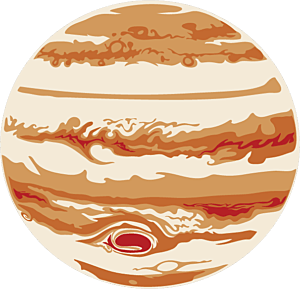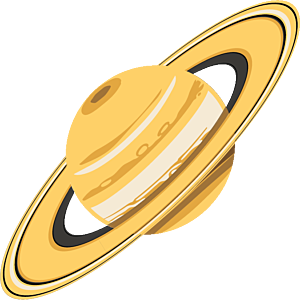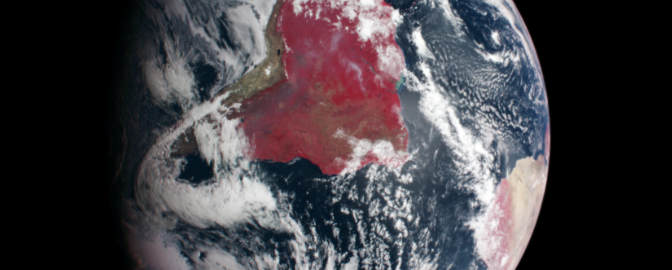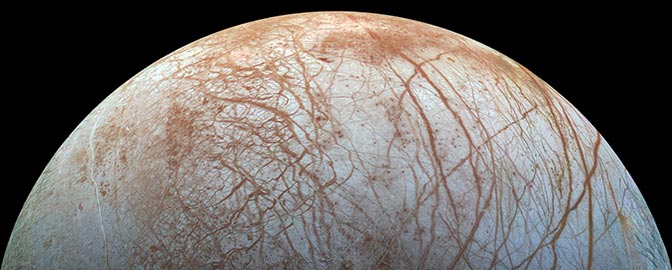The Downlink • Jul 11, 2025
Space sodas
Space Snapshot

This lucky NASA astronaut got to enjoy a sprite while in space. (Not the soft drink, though.) Nichole Ayers was aboard the International Space Station on July 3 when she took this astonishing photo of pink and purple light shooting up from a thunderstorm. What she captured was a sprite, a phenomenon caused by intense electrical activity within thunderstorms. Sprites are triggered by lightning, but shoot up into the mesosphere instead of down to Earth. Image credit: NASA.
Fact Worth Sharing

Sprites also happen on other planets with atmospheres, including Jupiter, where NASA's Juno mission detected sprites in 2020. Jupiter’s hydrogen-rich atmosphere would likely make sprites appear blue, rather than the reddish sprite color caused by nitrogen in Earth’s atmosphere.
Mission Briefings


DART’s successful asteroid deflection may come with a caveat. Recent analysis suggests that when NASA’s Double Asteroid Redirection Test mission intentionally slammed into the asteroid Dimorphos, massive boulders that were ejected by the impact may have altered the asteroid’s trajectory as much as the spacecraft itself. This could complicate calculations in future deflection scenarios. Observations by the European Space Agency's Hera mission, which will arrive at the Didymos-Dimorphos system in 2026, will help clarify what effect the ejected boulders may have had. Pictured: Dimorphos and Didymos (upper right) and material streaming away from Dimorphos after the impact, imaged by DART's companion spacecraft, the Italian LICIACube. Image credit: ASI/NASA.

Planets that orbit too close to their stars could trigger radiation flares. Research using the European Space Agency’s Cheops mission has found an exoplanet that orbits so close to its host star that its magnetic influence triggers solar flares. These flares appear to be stripping the planet of its atmosphere, causing it to shrink over time.

Astronomers have found a star that exploded twice. For the first time, astronomers have imaged a star that underwent a double supernova. The image, captured by the European Southern Observatory’s Very Large Telescope, shows two concentric shells of material ejected by two explosions.

New Horizons tested interstellar navigation for the first time. The NASA spacecraft, which is currently zooming through the Kuiper Belt, used the shift in apparent position of two stars over time to track its own position and movement through space. New Horizons is at risk of cancellation in the FY2026 NASA budget.
From The Planetary Society


Welcome a new telescope to the exploration club. The Vera C. Rubin Observatory recently shared its first public images, revealing millions of galaxies, stars, and asteroids in stunning detail. Stephanie Deppe, astronomy content strategist at Rubin Observatory, joins this week’s Planetary Radio to explain what makes these images so revolutionary, how the observatory works, and what’s coming next. Jess Soto, STEM Strategies Coordinator at Mount Wilson Observatory, also joins the show to talk about the life and legacy of the observatory’s namesake, Vera Rubin. Pictured: The Lagoon Nebula, imaged by the Vera C. Rubin Observatory. Image credit: NSF–DOE Vera C. Rubin Observatory.

Have Democrats ceded leadership in space policy? Mary Guenther, Director of Space Policy at the Progressive Policy Institute, joins the latest Planetary Radio: Space Policy Edition to discuss recent data showing that Democrats introduced a third fewer space bills than Republicans in recent years, and what she believes the party should do to better embrace this forward-looking field.

You can help advance the search for near-Earth objects with a gift of any amount to our Shoemaker NEO Grant program. The more expert asteroid hunters you help us fund, the more prepared we'll be to defend Earth from a possibly dangerous asteroid impact! Plus, when you give today, your gift will be matched up to $25,000 thanks to a Society member!
Space Advocate Update


The Planetary Society united every living NASA science chief in opposition to the unprecedented budget cuts. The entire past leadership of NASA’s science activities have released a joint statement condemning the proposed 47% cuts proposed to the agency’s science activities in the White House’s fiscal year (FY) 2026 budget proposal. The statement was coordinated by Planetary Society board member and former NASA astronaut John Grunsfeld. Read the statement here.

Hear what scientists behind threatened NASA missions say about what’s at stake. The Planetary Society interviewed scientists behind the missions facing cancellation in the FY2026 budget to hear first-hand about what is at risk. These world-class experts have devoted decades of their lives to these missions. Here is what they have to say, in their own words.

The congressional reconciliation bill rejects major changes to human spaceflight in FY 2026. H.R. 1, which was voted into law by Congress, is a bill that primarily focuses on taxation and mandatory spending. However, a provision included by Senator Ted Cruz (R-TX) provides $10 billion for NASA. But this amount does not support NASA’s science program. Instead, it funds NASA to build the SLS rockets for Artemis IV and V, the Gateway lunar station, and provides $1 billion for infrastructure improvements at human spaceflight centers around the country. Learn more about what this bill means for NASA.

What might the future of space look like? YouTuber and science communicator Kyle Hill recently hosted The Planetary Society's space policy experts Jack Kiraly and Casey Dreier on his channel to discuss the recent cuts to NASA's funding and what that means for the future of science in space. Watch the full video here.

The President has tapped the Secretary of Transportation to take over temporary leadership of NASA. Late on July 9, President Trump issued a directive that the current acting NASA Administrator, Janet Petro, be replaced immediately by Secretary of Transportation Sean Duffy. This would be the first time that NASA, an independent agency, would be run by the head of another department of the federal government. The President, in his announcement of the change, indicated that the move would be temporary as the administration searches for a new nominee for NASA Administrator.
What's Up

This week, look for super bright Venus in the predawn east, with very bright Jupiter low on the eastern horizon. Soon after sunset, Mercury is low in the west. Look for reddish Mars shining in the evening west. On July 16, the Moon will be near yellowish Saturn, rising in the middle of the night, and up fairly high before dawn. Find out what else to look for in July’s night skies.
Join now and save space missions

If you are not already a member, become one TODAY and help shape the future of space science and exploration by fueling mission-critical advocacy efforts. Our fight for space science is only possible because of the support of our members.
Will you join us and help save more missions?
Wow of the Week

Pepsi or Coke? This classic debate of preferences made its way into orbit in the 1980s in what was dubbed the Space Cola Wars. Starting in 1985, Coca-Cola and Pepsi engaged in their own space race to serve astronauts their popular drinks. During the STS-51-F Space Shuttle mission, astronauts tested specially designed soda dispensers from each company to see how the carbonated drinks would perform in microgravity. Here you can see Coca-Cola's sophisticated fluid dispenser, which out-performed Pepsi's modified shaving cream can. Image credit: NASA.
Send us your artwork!
We love to feature space artwork in the Downlink. If you create any kind of space-related art, we invite you to send it to us by replying to any Downlink email or writing to [email protected]. Please let us know in your email if you’re a Planetary Society member!


 Explore Worlds
Explore Worlds Find Life
Find Life Defend Earth
Defend Earth

